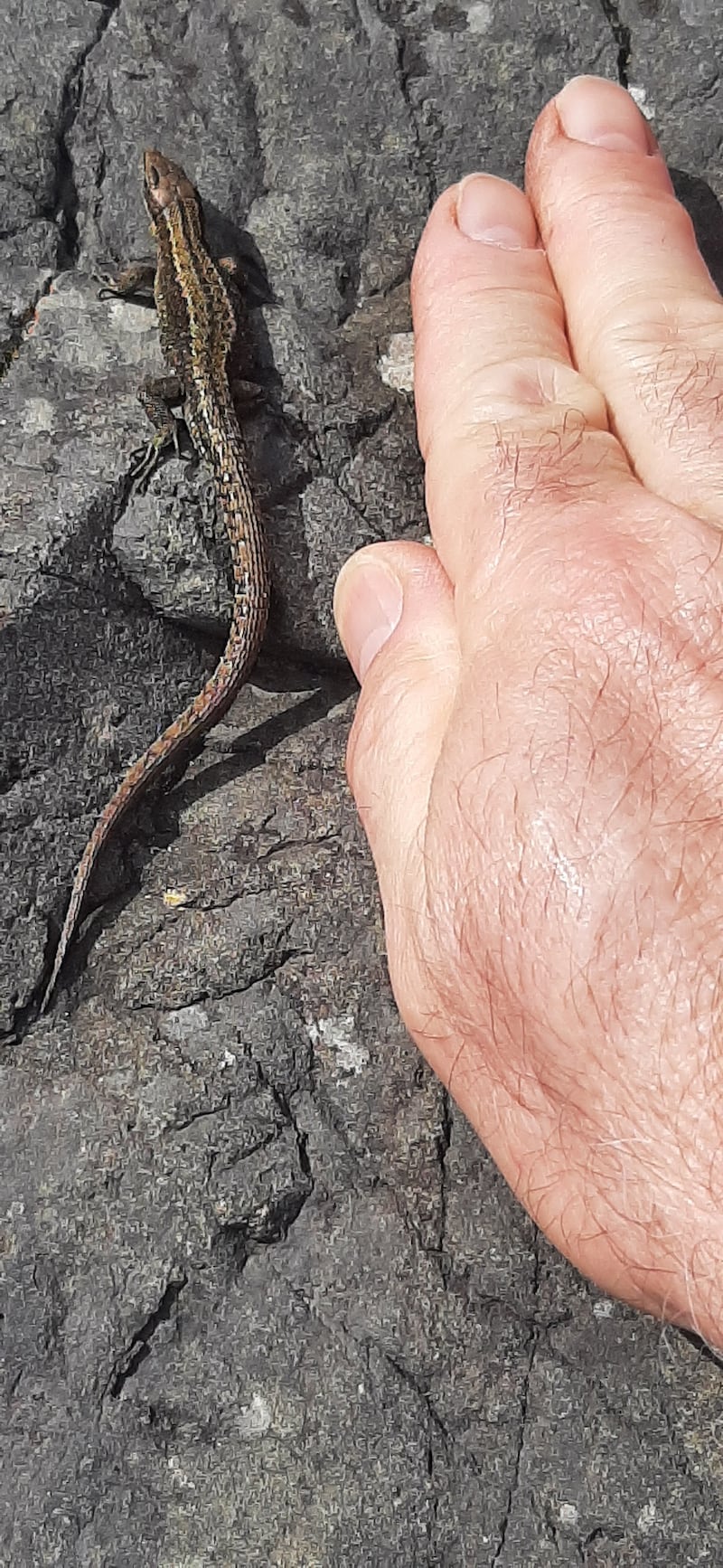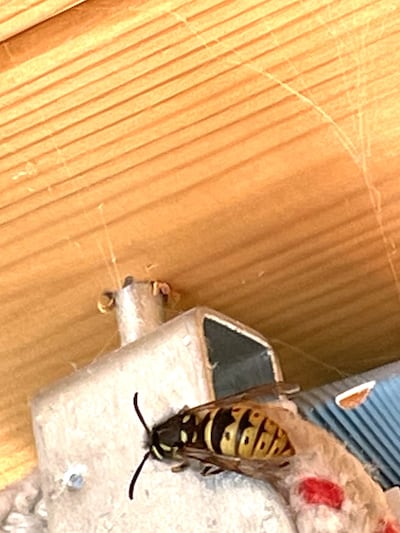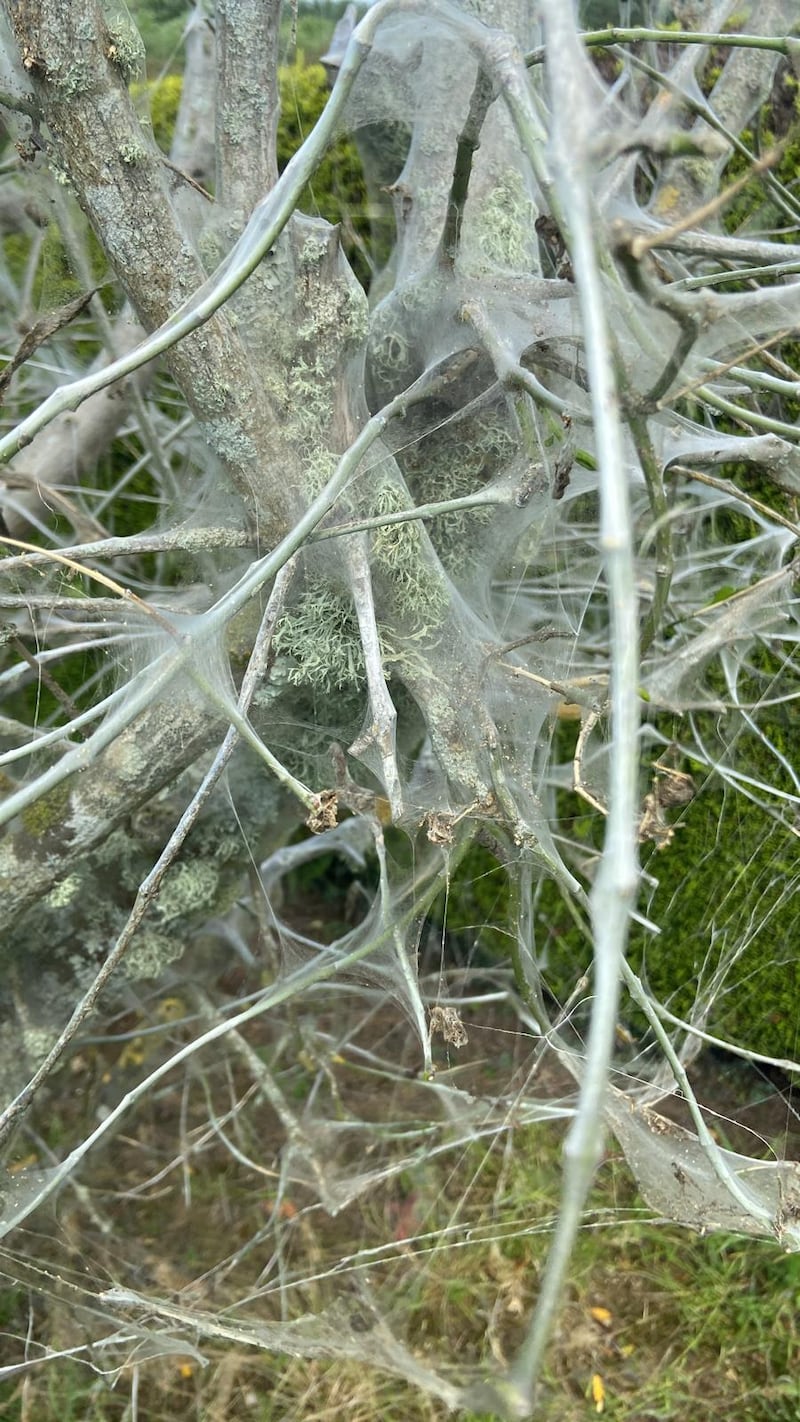Any idea what this little bug is? He has more of a chance of solving the Crosaire than I have. Anita Fennelly, Co Kilkenny
This insect is the two-banded longhorn beetle, Rhagium bifasciatum, whose larvae feed on decaying softwood. Adults when disturbed can make a creaking noise by rubbing the thorax against the base of the hind body. Sadly, though, they are not noted for their prowess at Crosaire.

I found this lizard alive but not moving on a water-covered rock in the shade this afternoon, temperature about nine degrees. One blue scale on its tail left side, 12-15cm long. Can you tell me what it is? Paul Murphy, Arklow
It is our only native lizard, Lacerta vivipara, the viviparous lizard, so called because it gives birth to live young as opposed to laying eggs. It hibernates during winter and emerges in spring, when temperatures are high enough. It is a cold-blooded animal and needs heat from the sun in order to move and hunt. It feeds on insects and spiders.
READ MORE

Lauriane, our French woofer, says this is a hornet. Frank McGrath, Co Roscommon
Well she would say that, coming from a country where the European hornet commonly occurs. We have no hornet species in Ireland so far. This is a queen common wasp, Vespula vulgaris, which is about twice the size of a worker wasp. Wasps are the gardener’s friends, as they spend all summer catching green, black and white flies from garden plants and feeding them in the nest to their brood. These in return, provide them with their food, a sugary ooze from their bodies.

This crawled out from under an abandoned shoe in my garden. There were several others as well. A smooth newt, I assume. Brendan Fitzsimons, Dublin
Yes, it is a smooth newt, our only native newt species. This amphibian is also the gardener’s friend, feeding as it does on slugs, snails and small insects while on land. It only enters ponds to breed in April and May and lives in sheltered wet places thereafter. Its old name, the mancatcher, comes from the fear that if you fell asleep outdoors one would crawl into your open mouth causing insatiable hunger if swallowed.

I found this blob on the lower ledge of a window in my porch. The skin was dry, but it wrinkled under my finger and the contents felt like soft marshmallow. The dark contents were finer than cocoa powder, closely packed and there seemed to be no structure to it. Can you tell me what it was, please? Máirín Kenny
This is Enteridium lycoperdon, the false puffball, a slime mould. The dark brown-black powdery contents, which form as it matures, are many, many millions of microscopic spores. It differs from the real puffball, which is a fungus, in that the fungus is a solid ball of white flesh when young. As it ages this flesh dissolves into millions of spores discharged through a hole in the upper surface in spurts of smoky-coloured spores.

What is this weird and spooky web that was all over my mother-in-law’s hedge and ornamental tree? It did a fair job demolishing the foliage. Martin Durcan, Co Mayo
It is the silk web spun by the caterpillars of the small ermine moth, Yponomeuta, which is a micro-moth. Which species it is depends on the food plant, which can be spindle or alternatively hawthorn and cherry plum. The caterpillars do a very comprehensive job stripping the hedge and tree of all its foliage, but all will recover completely when the caterpillars move on to the next stage of their development and stop eating.
Please submit your nature query, observation, or photo with a location, via irishtimes.com/eyeonnature












